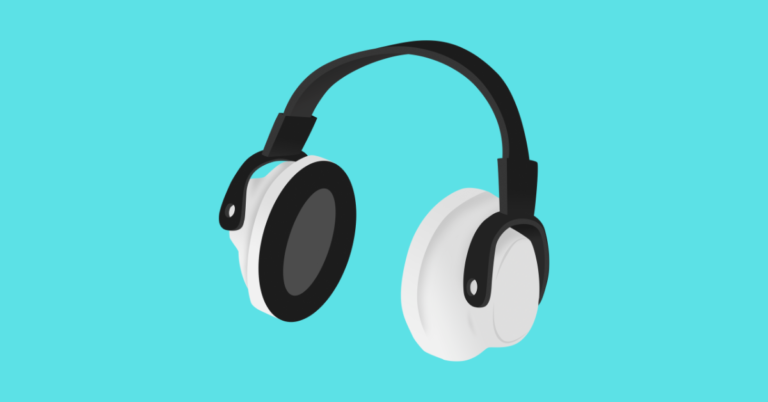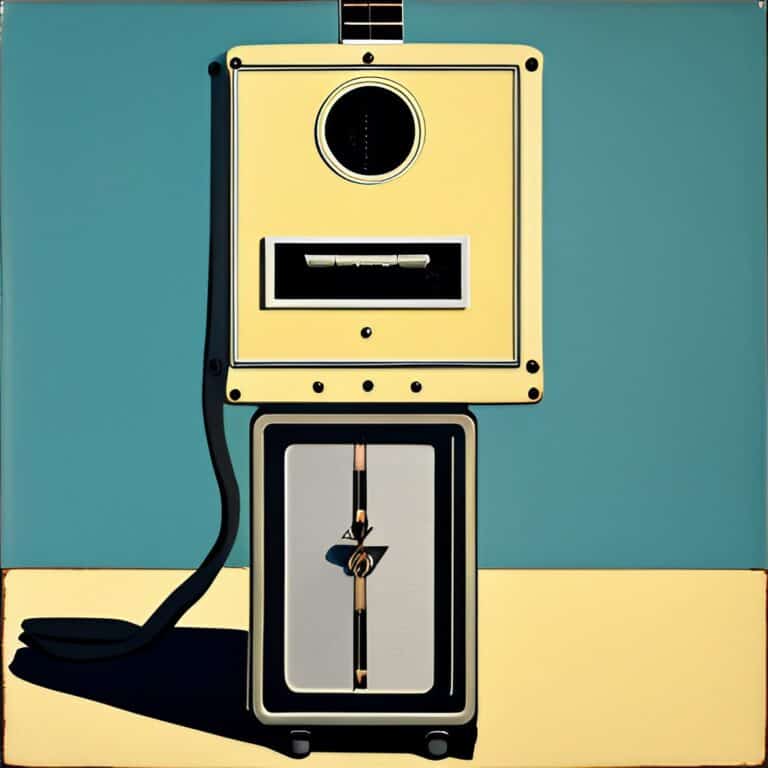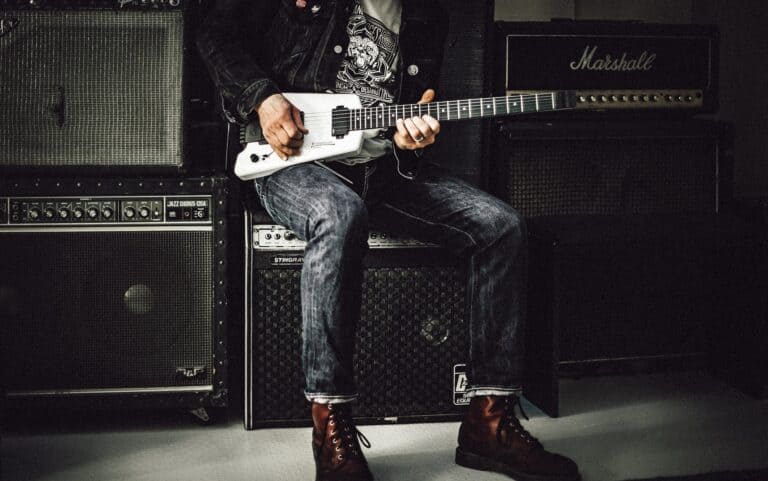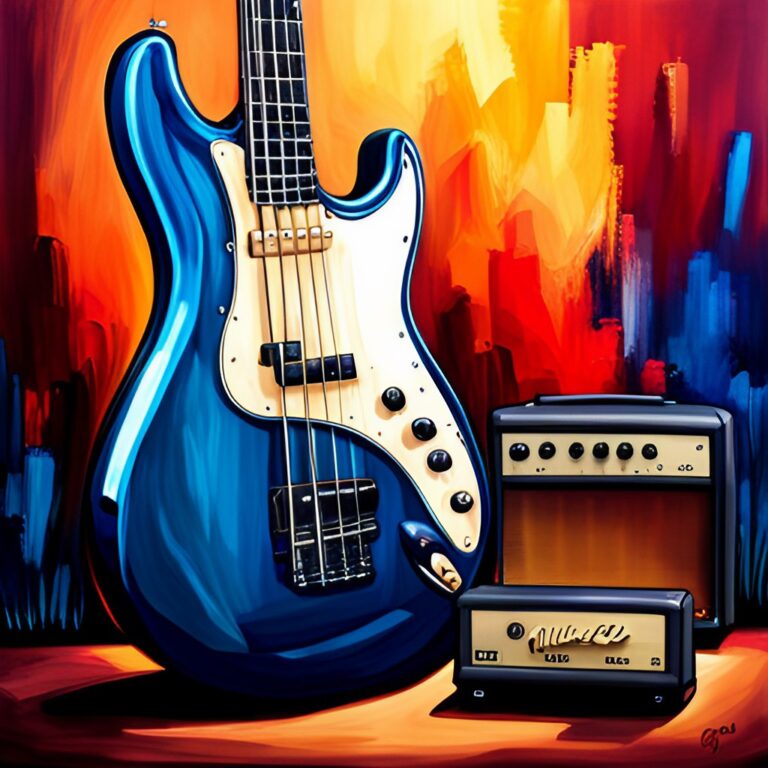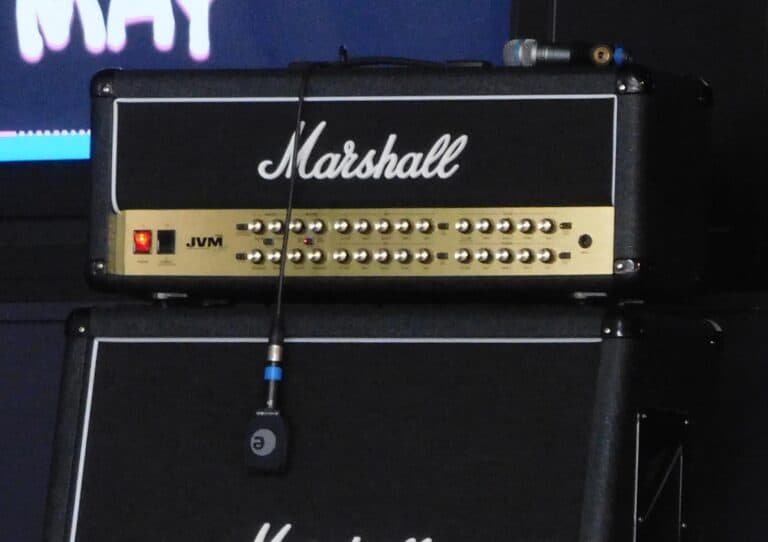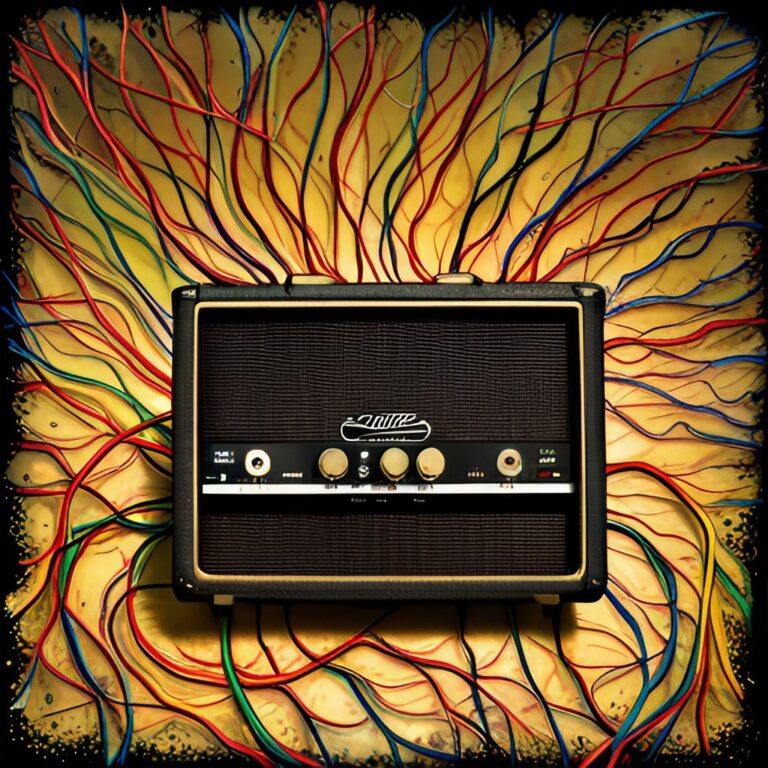We’ll save you the time, the following list includes the best practice amps, read on for more information on each amp. We have a short introduction, go through each amp in detail, and at the end we show you how to choose the best amp for you!
- Fender Mustang LT25
- Boss Katana-50 MkII
- Yamaha THR10II
- Orange Crush 20RT
- Ampeg BA-110V2
- Roland Cube Street EX
- Vox Pathfinder 10
- Blackstar Fly 3
- Fender Champion 20
- Peavey MAX 100
Having the best practice amp is extremely important when you want to have killer sound to boost confidence before hitting the stage. You want one that sounds great, but that won’t break the bank. In this article, we’ll review the 10 the best practice amps on the market, taking into account their portability, sound, specs, and pricing.
To help you make an informed decision, we’ve thoroughly researched and tested a wide range of models. Whether you’re a beginner who’s just starting out or a seasoned pro looking for an upgrade, we’ve got you covered. We’ve analyzed different features such as durability, ease of use, and even the extra bells and whistles. So, let’s dive in and explore the top 10 best practice amps that will take your guitar shredding to the next level. Be sure to read all reviews and check out the pros and cons of each model before making your choice. In addition to this info, if you want to maser the amp head, click here!
Tube Amps
Tube amps, also known as valve amps, are a type of guitar amplifier that utilizes vacuum tube technology to amplify the sound of an electric guitar. We included 2 of them on out list of best practice amps. Revered for their warm, rich, and dynamic tones, tube amps are often the go-to choice for professionals and serious hobbyists alike. They deliver an organic and responsive playing experience, offering subtle tonal nuances that react to the player’s touch. Although they tend to be heavier and require more maintenance than their solid-state counterparts, the distinctive tone and character provided by tube amps make them well worth the extra care and attention.
Fender Mustang LT25
First on our list fo best practice amps is the Fender Mustang LT25, a digital modeling amp that packs a serious punch despite its compact size. It features 25 watts of power and a custom 8″ speaker, providing a hearty and rich sound that’s sure to impress any guitarist. The amp’s greatest strength is undoubtedly its versatility, with a wide range of on-board features such as 20 amp models, 25 effects, and a USB interface for direct recording or preset management.
The Mustang LT25 also offers an intuitive user interface that makes it easy to navigate through its various options. With its clear, 1.8″ color display, you can easily scroll through and edit different settings and presets. In addition, the amp comes with a free Fender Tone 3.0 download, enabling you to further customize your sound and store up to 30 presets.
In terms of design, the Fender Mustang LT25 stays true to the classic Fender aesthetic with its sleek black chassis and silver grille cloth. It’s also highly portable, making it a great choice for guitarists who are always on the move. Whether you’re a beginner looking for your first amp or a seasoned pro in need of a reliable practice companion, the Fender Mustang LT25 is a fantastic choice as one of the best practice amps out there.
- Features: Digital modeling tube amp, 25W, built-in tuner
- Pros: Wide range of tones and effects, lightweight
- Cons: Limited onboard memory, may lack character of true tube amps
Boss Katana-50 MkII
Then on our best practice amp list is the Boss Katana-50 MkII, a solid-state amp that expertly combines power, versatility, and affordability. This 50-watt amp comes with a custom 12” speaker, delivering a sound that can easily fill a room or small venue. The Katana-50 MkII is renowned for its vast range of tones, with five unique amp voices: Clean, Crunch, Lead, Brown (derived from the Waza amp), and Acoustic (for acoustic-electric guitars).
The Boss Katana-50 MkII also showcases an impressive lineup of on-board effects, with a total of 60 varieties to choose from. Using the BOSS Tone Studio software, guitarists can customize their effects and store them for instant access during performance. The amp also comes with a power control feature, allowing you to obtain the rich and resonant tone of a high-powered amp at a volume suitable for home practice.
Design-wise, the Boss Katana-50 MkII follows a minimalistic aesthetic with its black casing and frontal control panel. It’s relatively lightweight, making it a practical and portable choice for gigging musicians. The Katana-50 MkII is an excellent choice for guitarists of all skill levels, offering a robust selection of features at a price point that won’t break the bank. The famous “Marty Music” YouTube channel claims in the video above this is not only the best practice amp, but the best period.
- Features: Solid-state amp, 50W, power control feature, built-in tuner
- Pros: Wide range of tones and effects, power control for lower volume practice
- Cons: Needs a PC for deep editing, not as portable as smaller models
Solid State Amps
Solid-state amps, as the name suggests, utilize solid-state electronics such as transistors, diodes, or ICs (integrated circuits) to amplify the signal. They will end out our best practice amp list. These amplifiers are known for their durability, consistency, and minimal maintenance – they are less prone to damage and require less upkeep compared to their tube counterparts. Solid-state amps offer a clean, clear and precise sound, making them a popular choice for genres that demand clarity and precision. Examples include pop, country, and jazz. They are typically more affordable, making them a great choice for beginners and budget-conscious musicians.
Yamaha THR10II
The Yamaha THR10II is another sterling example in the realm of solid-state amplifiers. Known for its compact design and versatile tonal choices, the THR10II defies the conventions of traditional guitar amplifiers with its innovative and unique features. Definitely on our list as one of the best practice amps.
One of the primary selling points of the Yamaha THR10II is its diverse range of amp models. The THR10II comes with 15 different guitar amp models, 3 bass amp models, and 3 mic models for acoustic-electrics. This multitude of models allows for a broad spectrum of tones, catering to guitarists of all genres and styles.
In addition to its variety of amp models, the THR10II also includes a range of effects. With effects like chorus, flanger, phaser, tremolo, delay, delay/reverb, spring reverb, and hall reverb, the THR10II gives musicians a plethora of options, eliminating the need for external pedals.
But perhaps the most impressive feature of the THR10II is its wireless capability. The amp can connect to a mobile device via Bluetooth, allowing you to play along with your favorite tracks or use Yamaha’s dedicated app for further tone customization. This feature brings convenience to a new level, making the THR10II not just an amplifier, but a comprehensive practice tool.
- Features: Solid-state amp, 20W, wireless connectivity, built-in effects
- Pros: Wide range of amp models and effects, wireless capability
- Cons: Limited power for larger performances, additional features require a mobile device
Orange Crush 20RT
The Orange Crush 20RT is an ideal option for guitarists seeking a portable yet powerful amplifier, definitely one of the best practice amps out there. It is known for its robust, handmade design coupled with the unmistakable warmth and grit of an Orange amp. The brand’s reputation for creating quality amplifiers is clearly evident in the design and performance of the 20RT.
The Crush 20RT distinguishes itself through its high gain, overdrive, and detailed saturation, making it excellent for those who love rock, metal, and blues genres. It provides two channels, clean and dirty, with a shared three-band EQ, offering flexibility and a wide range of tonal possibilities.
One standout feature of the Orange Crush 20RT is its onboard tuner and reverb, rare in amps of this size. The tuner ensures accuracy in performance, while the reverb adds spatial depth to the output. Additionally, the inclusion of a buffered effects loop allows players to connect their favorite pedals directly into the signal path without sacrificing tone quality.
Despite its many features, the Crush 20RT is designed with simplicity and user-friendliness in mind. The top panel is straightforward and intuitive, allowing you to easily tweak your tone. The amp also offers a headphone output for silent practice, a valuable addition for those late-night jam sessions. A must have on our best practice amp list.
- Features: Solid-state amp, 20W, built-in tuner and reverb, buffered effects loop
- Pros: High-gain tones, user-friendly, built-in tuner and reverb
- Cons: No wireless capability, may not be powerful enough for larger performances
Ampeg BA-110V2
The Ampeg BA-110V2 is a versatile and portable bass amplifier designed to deliver a wide range of tones, from clean and clear to gritty and overdriven. At the heart of the BA-110V2 is a 10-inch Ampeg Custom speaker that delivers a surprisingly powerful sound for an amp of its size. This makes it an ideal choice for small gigs and rehearsals, as well as home practice.
The BA-110V2 stands out for its 60-degree monitoring angle, which allows the sound to be directed at the ears and not the feet. This feature, often found only in higher-end models, makes it unique in its price range. Furthermore, this amp comes with Ampeg’s renowned Ultra Hi and Ultra Lo switches, enabling a broad tonal range and facilitating everything from funk and jazz to rock and metal styles.
This amp is not just about power and tone; it also offers a suite of practical features. The BA-110V2 has an auxiliary input for connecting external audio devices and a headphone output for quiet practice. Additionally, it is equipped with a CD input and an output for a PA system, making it a versatile companion for any bass player.
- Features: Bass combo amp, 40W, 10-inch custom speaker, Ultra Hi/Lo switches
- Pros: Versatile, portable, 60-degree monitoring angle
- Cons: Lack of onboard effects, may not be suitable for large gigs
Roland Cube Street EX
Next on our list of best practice amps is the Roland Cube Street EX is a highly versatile, portable, and powerful amplifier that is perfect for performing musicians who need a robust, reliable, and supremely portable solution. With its compact design and battery-powered operation, the Cube Street EX is ideal for street performances, small gigs, and practice sessions.
This amp is known for its impressive sound output despite its compact size. It boasts up to 50 watts of power, making it one of the most powerful portable amps on the market. The Cube Street EX houses a pair of high-performance 8-inch speakers that deliver a clear, loud, and well-rounded sound, sufficient to cover small to medium-sized venues.
The Cube Street EX is not just about power; it’s also about versatility and control. This amp offers four independent channels for connecting a variety of mics and instruments, and each channel has its volume control. It also comes with built-in effects, including reverb and echo, adding another dimension to your sound. Plus, the amp has an i-CUBE LINK interface, which allows you to integrate it with your iOS devices.
- Features: Battery-powered amp, 50W, 8-inch custom speakers, four independent channels, built-in effects
- Pros: Versatile and portable, works with a variety of instruments and mics, powerful output, built-in effects
- Cons: Battery life may be limited under maximum output, may be too small for larger performances
Vox Pathfinder 10
The Vox Pathfinder 10 embodies the iconic British tone, classic design, and robust construction that Vox amplifiers are famed for. This compact, budget-friendly amp is perfect for beginners and experienced musicians alike who desire top-notch sound in a small, portable package.
The Pathfinder 10 is noted for its impressive performance. It offers 10 watts of power through a 6.5-inch Vox Bulldog speaker, delivering a clean and vibrant sound. The bright switch feature on the amp enhances the range of available tones, emphasizing high frequencies for a sparkling, crisp sound. Despite the amp’s small size, it produces a surprisingly loud and clear output, suitable for small gigs and practice sessions.
The amp’s simplicity is one of its strongest features. It has a two-band EQ, gain, and volume control, making it easy to dial in your desired tone. The input and headphone/output jacks provide connectivity options, and the rugged construction ensures that this amp is built to last.
- Features: 10W, 6.5-inch Vox Bulldog speaker, bright switch feature, two-band EQ
- Pros: Compact and portable, delivers clean and vibrant sound, easy to use, durable
- Cons: Limited volume for larger performances, fewer features compared to larger amps
Blackstar Fly 3
The Blackstar Fly 3 is a revolutionary mini amplifier that packs a powerful punch despite its small size, we included it on the list of best practice amps because of this. It features a compact design that makes it perfect for musicians on the go, being easily transportable for impromptu jam sessions, traveling or just practicing around the home.
The Fly 3 offers innovative features that make it stand out from other mini amplifiers. It boasts patented ‘Infinite Shape Feature (ISF)’ technology that allows you to vary the tonal character of the amp, granting you the ability to manipulate your sound from traditional British heavy metal to the classic American tone. This gives you the versatility to customize your audio output to suit your musical style.
This amp also consists of a 3 Watt output, a digital ‘tape’ delay effect, MP3/Line In jack for jamming to your favorite tracks and a speaker-emulated output for silent practice or recording sessions. It operates on batteries, adding to its portability, but can also be powered by a DC supply.
- Features: 3W, Infinite Shape Feature (ISF), digital ‘tape’ delay effect, MP3/Line In jack, Speaker Emulated Output
- Pros: Highly portable, versatile sound control, handy recording and jamming features, can be battery powered
- Cons: May lack the raw power needed for larger performances, battery life can be limited
Fender Champion 20
Next on our best practice amp list is the Fender Champion 20 is a versatile and reliable amplifier ideal for beginners and intermediate players. Known for its robust sound and user-friendly features, this compact amp delivers the legendary Fender tone in an ultra-convenient and affordable package.
One of its prominent features is the ‘Voice’ knob, which allows you to choose from a variety of presets – clean to mean tones. This lets you explore different genres without needing several amps. Moreover, it has a selection of digital effects like reverb, chorus, flange, delay, and more at your disposal, enriching your sound and providing you with the tools to explore and create your unique tone.

The Champion 20 provides 20 Watts of power, making it suitable for small gigs and home practice. It also includes an auxiliary input for connecting an MP3 player or any music device, letting you play along to your favorite songs or backing tracks. Furthermore, the headphone output is perfect for silent practice, enabling you to hone your skills without disturbing those around you.
- Features: 20W, Voice knob for various presets, multiple digital effects, Aux input, Headphone output
- Pros: Versatile sound options, user-friendly features, suitable for small gigs and home practice, affordable
- Cons: Limited power for larger performances, some effects may not be as high-quality as on larger amps
Peavey MAX 100
The last on our list of best practice amps is the Peavey MAX 100 is a powerhouse of an amplifier offering exceptional performance and value in a compact design. It is the perfect choice for bass players seeking deep, punchy sound and robust bass tones. With its 100 Watts of power, it can effortlessly handle small to medium-sized gigs, making it a fantastic choice for musicians who perform regularly at clubs or similar venues.
One of the standout features of the MAX 100 is the TransTube circuitry that emulates the sound of tube amplifiers, providing a warm, rich tone that is highly sought after by many bass players. This amplifier also boasts a three-band EQ for precise sound shaping and a psycho-acoustic low end enhancement that adds depth to your tone, ensuring your bass lines always stand out.
The MAX 100 also includes a headphone output for silent practice, making it a versatile amp suitable for home use as well. Its auxiliary input allows you to connect your music device, so you can jam to your favorite tracks or practice with backing tracks. Its robust construction and affordable price tag make the Peavey MAX 100 a great investment for any bass player looking to enhance their sound and performance.
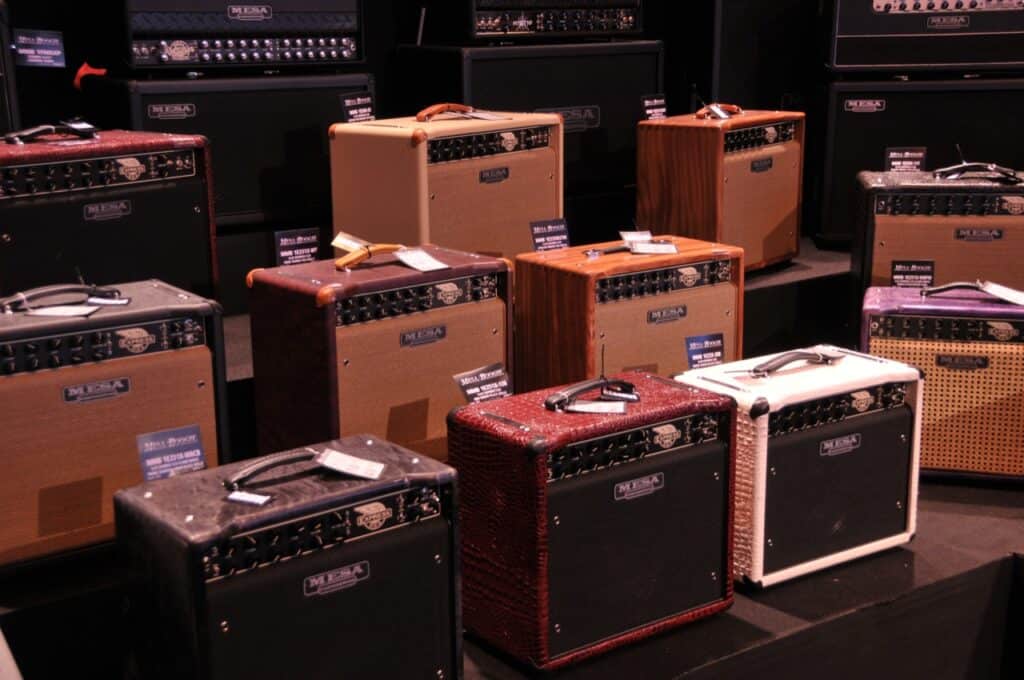
- Features: 100W, TransTube circuitry, three-band EQ, psycho-acoustic low-end enhancement, Aux input, Headphone output
- Pros: Powerful sound, versatile tone-shaping options, perfect for small to medium-sized gigs, affordable
- Cons: Its size may not be suitable for larger venues, some may find the tone controls a bit sensitive
Choosing Best Practice Amp: Key Factors
When choosing the best practice amp, there are several key factors to consider.
The first is the power rating. This determines how loud the amp can get without distorting the sound. For home practice, an amp with a power rating of 10-30 watts is typically sufficient. However, if you’re planning to jam with a drummer or perform at small venues, you may need an amp with a power rating of at least 50 watts.
The second factor is the size and portability of the amp. If you need to transport the amp frequently, or if you have limited space, you may want to opt for a compact, lightweight amp. On the other hand, larger amps often have larger speakers, which can provide a fuller, richer sound.
The third factor to consider in choosing the best practice amp is the amp’s features. Most practice amps come with basic controls for volume, bass, and treble. However, some models offer additional features like built-in effects, a headphone jack for silent practice, or an auxiliary input to connect a music device for playing along to tracks.
Ultimately, the best practice amp for you depends on your individual needs as a musician. It’s important to consider how you will be using the amp, and what features are most important to you.
Power Needs For Best Practice Amp
Power needs for the best practice amps can vary significantly depending on the situation. For a quiet practice session at home, a small amp with lower wattage, around 10 to 20 watts, is more than enough. These low-wattage amps are ideal because they allow you to attain good tone at low volumes, which is less likely to disturb your neighbors or other members of your household.
If you’re planning to play at jam sessions or small gigs where you’ll be competing with drummers and other amplified instruments for volume, you’ll need an amp with a bit more power. Amps ranging from 50 to 100 watts are usually sufficient for these situations. These amps are loud enough to be heard over the other instruments, but not so loud as to overwhelm them.
For larger venues or performances with a full band, even more power may be required. In these cases, amps with 100 watts or more can provide the necessary volume, while still maintaining clear, undistorted tone. However, it’s essential to note that these high-powered amps can be very loud, and may not be suitable for situations where volume control is critical. Always consider the specific circumstances and requirements of your performance when determining the power needs for your amp.
Connectivity of Best Practice Amps
Connectivity in the context of the best practice amp refers to the various input and output ports that the amp offers. The standard guitar amps typically come with a 1/4-inch input jack for plugging in your instrument. However, modern amps may offer additional options for connectivity that can significantly enhance the versatility and functionality of the amp.
For instance, many of the best practice amps now include a headphone jack. This allows you to play your guitar through the amp without disturbing others around you, making it perfect for late-night practice sessions. Some amps also come with an auxiliary input, allowing you to connect your MP3 or CD player to the amp. This is particularly useful for playing along with backing tracks, or just jamming along to your favorite songs.
In addition to these standard connections, some higher-end amps may also offer more advanced connectivity options, such as USB ports or even Bluetooth compatibility. A USB port can enable you to connect the amp directly to your computer, allowing you to record your playing or use the amp as an interface for recording software. Bluetooth compatibility, on the other hand, allows you to wirelessly connect your smartphone or tablet to the amp, which can be used to stream backing tracks or use guitar apps.
Finally, it’s worth mentioning XLR outputs, which are common on higher-end amps. These allow you to connect your amp directly to a PA system or recording interface, providing a balanced signal that is immune to noise and interference. This is particularly valuable for professional musicians who require a clean, clear signal for recording or live performance.
In conclusion, considering the connectivity options of an amp is crucial because it determines the flexibility of the amp in various scenarios. Depending on what you need the amp for, you might require more than just the standard guitar input jack. Whether it’s headphone outputs for silent practice, auxiliary inputs for jamming with tracks, or advanced options like USB and Bluetooth for recording and streaming capabilities, the connectivity of an amp plays a significant role in its overall functionality and usefulness.
Conclusion
To sum up, it is important to remember that the best practice amp to choose depends on your specific needs. Knowing what type of sound you are aiming for and considering the option of a tube amp can help you find the right model for you. Although there are various models of amps available, understanding what type suits your needs best will help you make an informed decision when choosing the best practice amps for your setup. Ultimately, the type of amp you choose will depend on your musical goals and preferences. With so many choices out there, it’s important to be sure that you choose the right one for your needs.


